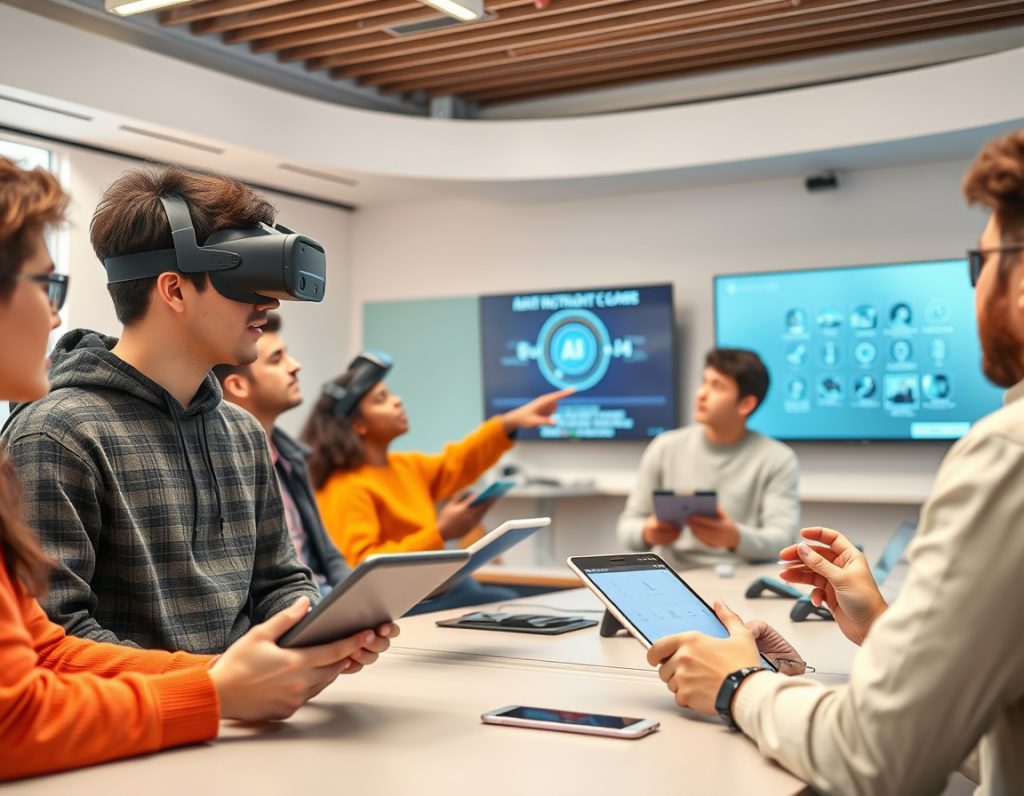Did you know that 85% of AI projects will deliver erroneous outcomes due to bias by 2024? As an educator, this statistic sent shivers down my spine! AI is revolutionizing our classrooms, but it’s bringing along an uninvited guest: bias. From skewed assessments to biased content recommendations, AI bias in education is a ticking time bomb. But fear not! I’m here to equip you with the knowledge and strategies to tackle this challenge head-on. Let’s dive into the world of AI bias in education and learn how we can create a fairer, more inclusive learning environment for all our students!
Understanding AI Bias in Educational Tools
First things first – what exactly is AI bias in education? Simply put, it’s when our fancy AI tools play favorites, often without meaning to. This algorithmic bias in education can show up in various ways:
- Biased content recommendations (sorry, Shakespeare, but AI might think you’re old news!)
- Unfair assessments (because let’s face it, even robots can have bad days)
- Skewed learning pathways (one-size-fits-all? More like one-size-fits-some)
The root cause? Often, it’s biased training data. Our AI friends are only as good as the info we feed them, and sometimes that info comes with a side of unintended bias. The impact of AI bias in education can be serious. It might reinforce stereotypes, limit opportunities, or even discourage some students from certain subjects. Not cool, AI. Not cool at all.
From fairness in AI-powered assessments to inclusive AI chatbots for education, every step we take towards mitigating bias is a step towards a more equitable educational landscape.
Recognizing AI Bias in Your Classroom
So, how do we spot this sneaky AI bias in education? Here are some red flags to watch for:
- Consistent patterns favoring certain groups
- Recommendations that seem off-base for some students
- Assessment results that don’t match up with your observations
To keep our AI tools in check, we need to put on our detective hats. Regularly assess AI-generated content for fairness, and don’t be shy about using AI bias detection tools. By staying vigilant and proactive, we can harness the power of AI while ensuring it serves all our students equally.
Remember, in the world of educational AI transparency, we’re the guardians!
Strategies for Mitigating AI Bias in Educational Tools
Now, let’s talk solutions! Here’s how we can fight AI bias in education:
- Diversify that data! The more varied our training data, the less biased our AI becomes.
- Implement AI fairness constraints. It’s like giving AI a moral compass.
- Regular check-ups are key. Think of it as an annual physical for your AI tools.
By focusing on these AI bias mitigation strategies, we’re taking big steps towards fairness in AI-powered assessments and creating more inclusive AI algorithms.

Promoting Algorithmic Literacy Among Students
Let’s not forget our students in this equation! Teaching them about AI ethics in schools is crucial. Here’s how:
- Encourage critical thinking about AI-generated content
- Include lessons on AI ethics curriculum in your teaching
- Empower students to spot and report potential bias
By boosting AI literacy for educators and students alike, we’re creating a generation of savvy digital citizens.
Collaborating with EdTech Companies to Address Bias
We’re all in this together, folks! That includes our EdTech partners. Don’t be shy about:
- Voicing concerns about AI bias in education
- Participating in beta testing (because who doesn’t love being a tech guinea pig?)
- Advocating for algorithmic accountability in education
Remember, transparency is key in creating ethical AI in classrooms.
Creating Inclusive AI-Powered Learning Environments
Diversity isn’t just a buzzword – it’s essential for fighting AI bias in education. Let’s focus on:
- Ensuring diverse representation in AI-generated content
- Adapting tools for different learning styles (culturally responsive AI, anyone?)
- Balancing personalization with inclusivity
By promoting inclusive AI design, we’re creating a learning environment where every student can thrive.
Ethical Considerations in AI-Enhanced Education
Now, let’s talk ethics. As we navigate AI bias in education, we need to consider:
- Student data privacy in AI (because what happens in the classroom should stay in the classroom)
- Addressing socioeconomic disparities in AI access
- Balancing AI efficiency with human oversight (sorry, AI, but you can’t replace us just yet!)
These ethical considerations in AI proctoring and beyond are crucial for maintaining trust in our AI-enhanced classrooms.
Future Trends in AI Bias Mitigation for Education
Looking ahead, exciting developments are on the horizon:
- New tech for bias detection and correction (AI policing AI – how meta!)
- Potential policy changes addressing AI bias in education
- Increased focus on teacher training to combat bias
As we embrace these trends, we’re paving the way for fair AI model development and more equitable AI-driven personalization in education.
The Role of Teachers in Combating AI Bias
As educators, we play a crucial role in addressing AI bias in education. Here’s how we can make a difference:
- Stay informed about the latest developments in AI and education
- Critically evaluate AI tools before implementing them in the classroom
- Provide feedback to EdTech companies on potential bias issues
- Advocate for diverse representation in AI development teams
Remember, our experience and insights are invaluable in the fight against AI bias in education.

Addressing Specific Areas of Concern
Let’s dive deeper into some specific areas where AI bias in education can have a significant impact:
- AI bias and standardized testing: We need to ensure that AI-powered assessment tools don’t perpetuate existing biases in standardized testing.
- AI bias and special education: AI tools should be adaptable to the diverse needs of students with disabilities, avoiding one-size-fits-all approaches.
- AI bias and language learners: Language models used in educational AI should be trained on diverse linguistic data to avoid disadvantaging non-native speakers.
- AI bias and career guidance: AI-powered career counseling tools should provide fair and unbiased recommendations, free from gender or racial stereotypes.
By addressing these specific areas, we can create a more equitable educational environment for all students.
Implementing Bias-Free AI in Your Classroom
Ready to take action? Here are some practical steps you can take to combat AI bias in education in your classroom:
- Conduct regular audits of AI tools you’re using
- Encourage students to question AI-generated content
- Use diverse datasets when training classroom AI models
- Collaborate with colleagues to share experiences and strategies
Remember, every small step counts in the fight against AI bias in education.
Conclusion
Phew! We’ve covered a lot of ground in our journey through AI bias in education. From understanding the problem to implementing solutions and looking to the future, we’ve armed ourselves with the knowledge to create fairer, more inclusive AI-powered classrooms.
Remember, addressing AI bias in education isn’t a one-and-done deal. It’s an ongoing process that requires our attention, effort, and commitment. But with these strategies in our toolkit, we’re well-equipped to take on this challenge.
So, are you ready to be a champion for fairness in AI education? Let’s go out there and show AI bias in education who’s boss! Together, we can create a learning environment where every student has the opportunity to shine, regardless of what the algorithms might initially think.


